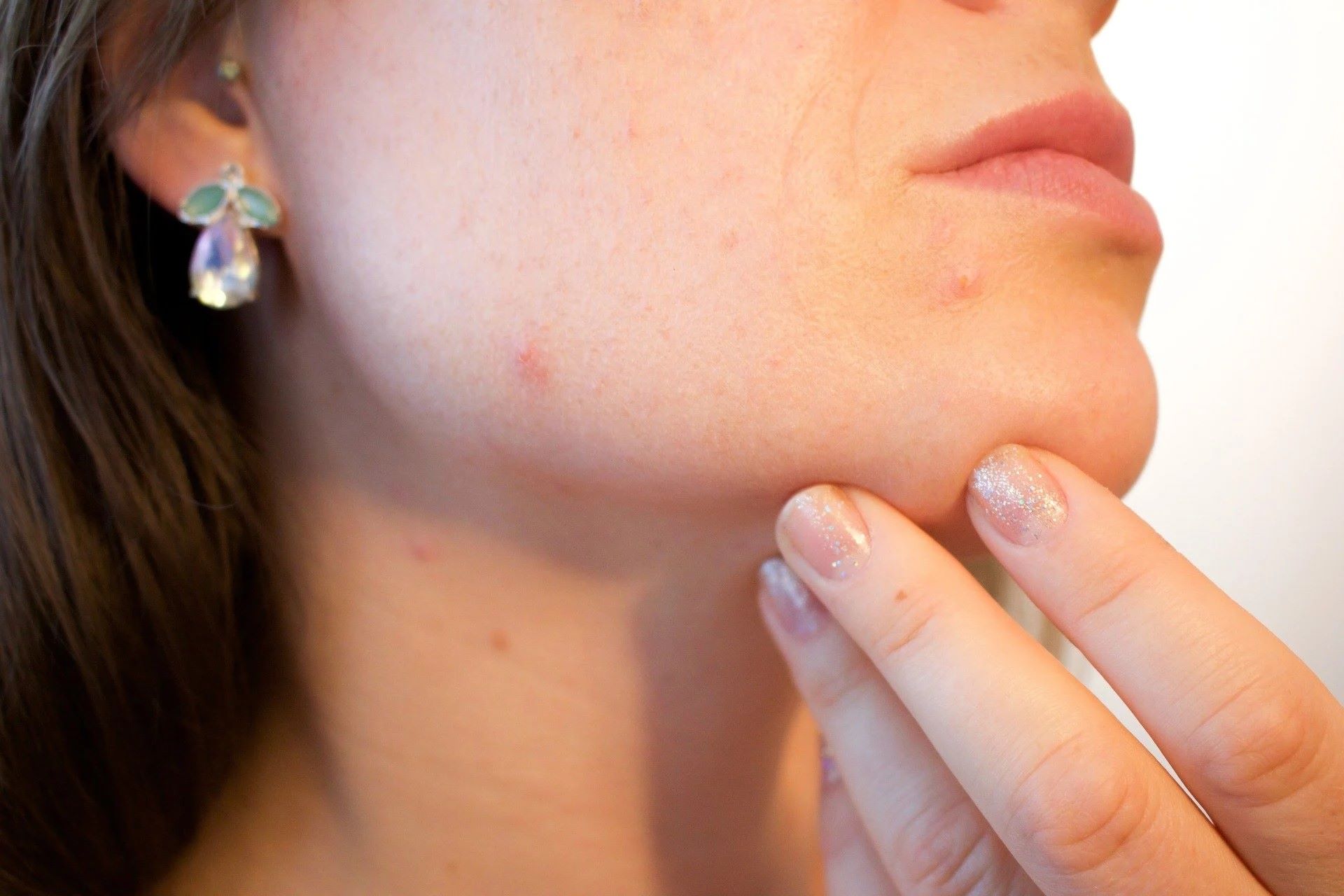Home>Health and Wellness>How To Treat High Dhea Levels In Females


Health and Wellness
How To Treat High Dhea Levels In Females
Published: February 29, 2024
Learn effective ways to manage high DHEA levels in females for better health and wellness. Discover expert tips and treatments to address this hormonal imbalance.
(Many of the links in this article redirect to a specific reviewed product. Your purchase of these products through affiliate links helps to generate commission for Regretless.com, at no extra cost. Learn more)
Table of Contents
Introduction
High levels of DHEA (dehydroepiandrosterone) in females can lead to various health concerns, making it essential to understand the causes, symptoms, and treatment options associated with this condition. DHEA is a hormone produced by the adrenal glands and plays a crucial role in the body's overall hormonal balance. While DHEA is important for the production of other hormones, such as estrogen and testosterone, excessive levels can lead to imbalances that impact overall well-being.
Understanding the implications of high DHEA levels is vital for maintaining optimal health. This article will delve into the symptoms, causes, diagnosis, and treatment options for high DHEA levels in females. By shedding light on this topic, individuals can gain valuable insights into managing their health and seeking appropriate care when necessary.
Read more: How To Lower High Hematocrit Levels
Understanding DHEA and its role in the body
DHEA, or dehydroepiandrosterone, is a steroid hormone produced primarily by the adrenal glands, but it is also synthesized in smaller amounts by the ovaries in females. It serves as a precursor to the sex hormones estrogen and testosterone, playing a pivotal role in maintaining hormonal balance within the body. DHEA levels typically peak in one's twenties and gradually decline with age.
The hormone's impact extends beyond its role in sex hormone production. DHEA also influences immune function, energy levels, mood regulation, and overall well-being. It supports the body's ability to cope with stress and plays a part in maintaining bone density and muscle mass. Furthermore, DHEA is involved in the regulation of insulin sensitivity and may have a role in cardiovascular health.
In females, DHEA is integral to the menstrual cycle and fertility. It contributes to the development and function of the reproductive organs, as well as the maintenance of healthy bone density. Additionally, DHEA is associated with the maintenance of muscle strength and cognitive function.
While DHEA is essential for various bodily functions, an imbalance in its levels can lead to health issues. High DHEA levels in females can result in symptoms such as acne, irregular menstrual cycles, excessive hair growth (hirsutism), and male-pattern baldness. It can also disrupt the delicate hormonal equilibrium, potentially impacting fertility and overall well-being.
Understanding the multifaceted role of DHEA in the body is crucial for recognizing the implications of high levels. By gaining insight into the functions of this hormone, individuals can better comprehend the potential effects of DHEA imbalances and seek appropriate guidance for managing their health effectively.
Symptoms of high DHEA levels in females
High levels of DHEA in females can manifest through a range of noticeable symptoms, signaling potential hormonal imbalances within the body. These symptoms often reflect the influence of excess androgen production, which can disrupt the delicate hormonal equilibrium. It's important to recognize these signs to seek appropriate medical attention and address the underlying causes effectively.
-
Acne: Excessive DHEA levels can lead to an increase in androgen production, contributing to the development of acne. This can be particularly distressing for females, impacting their self-esteem and overall well-being.
-
Irregular menstrual cycles: High DHEA levels may disrupt the regularity of menstrual cycles, leading to irregular periods or even the absence of menstruation (amenorrhea). These changes can pose challenges for reproductive health and fertility.
-
Excessive hair growth (hirsutism): Elevated DHEA levels can stimulate the growth of coarse, dark hair in areas where it typically doesn't occur in females, such as the face, chest, and back. This condition, known as hirsutism, can be emotionally distressing and affect one's self-image.
-
Male-pattern baldness: High DHEA levels can contribute to hair thinning and the development of male-pattern baldness in females. This can be a source of significant distress and may impact self-confidence.
-
Voice deepening: In some cases, excessive DHEA levels can lead to a deepening of the voice, resembling a more masculine tone. This change can be alarming and may prompt individuals to seek medical evaluation.
-
Changes in libido: High DHEA levels can influence sexual desire and function, leading to changes in libido. This can affect intimate relationships and overall well-being.
-
Mood disturbances: Imbalances in DHEA levels may contribute to mood swings, irritability, and emotional instability. These changes can impact daily life and interpersonal relationships.
-
Insulin resistance: Elevated DHEA levels can affect insulin sensitivity, potentially leading to insulin resistance. This can have implications for metabolic health and may contribute to the development of conditions such as type 2 diabetes.
Recognizing these symptoms is crucial for identifying potential imbalances in DHEA levels and seeking appropriate medical guidance. By understanding the manifestations of high DHEA levels, individuals can take proactive steps to address these concerns and work towards restoring hormonal balance and overall well-being.
Causes of high DHEA levels in females
High DHEA levels in females can stem from various underlying factors, contributing to hormonal imbalances that manifest through a range of symptoms. Understanding the potential causes of elevated DHEA levels is essential for addressing the root issues and restoring hormonal equilibrium. Here are several factors that can lead to high DHEA levels in females:
-
Adrenal gland disorders: Conditions such as adrenal hyperplasia and adrenal tumors can prompt the adrenal glands to produce excessive amounts of DHEA. Adrenal hyperplasia involves the overgrowth of adrenal tissue, leading to increased hormone production. Similarly, adrenal tumors, whether benign or malignant, can disrupt the normal functioning of the adrenal glands, resulting in heightened DHEA secretion.
-
Polycystic ovary syndrome (PCOS): PCOS is a common endocrine disorder characterized by hormonal imbalances, insulin resistance, and ovarian cysts. Women with PCOS often exhibit elevated levels of androgens, including DHEA. The exact mechanisms underlying DHEA elevation in PCOS are complex and may involve interactions between insulin resistance, ovarian dysfunction, and adrenal hormone production.
-
Cushing's syndrome: This condition arises from prolonged exposure to high levels of the hormone cortisol, which can stem from various sources, such as adrenal tumors or long-term use of corticosteroid medications. Elevated cortisol levels can lead to increased DHEA production as the adrenal glands strive to maintain hormonal balance, contributing to high DHEA levels in females.
-
Stress and psychological factors: Chronic stress can impact adrenal function, potentially leading to increased DHEA secretion. The adrenal glands play a crucial role in the body's stress response, and prolonged or intense stress can influence hormone production, including DHEA. Additionally, psychological factors such as anxiety and depression may contribute to hormonal imbalances, potentially leading to elevated DHEA levels.
-
Genetic predisposition: Some individuals may have a genetic predisposition to higher DHEA levels due to variations in genes related to hormone regulation. Genetic factors can influence adrenal function and hormone production, potentially leading to elevated DHEA levels in females.
-
Medications and supplements: Certain medications and supplements, such as DHEA supplements, can directly contribute to increased DHEA levels in females. Additionally, the use of corticosteroids for medical conditions can impact adrenal function and hormone production, potentially leading to elevated DHEA levels as a side effect.
Understanding the potential causes of high DHEA levels in females is crucial for guiding diagnostic evaluations and developing targeted treatment approaches. By identifying the underlying factors contributing to elevated DHEA levels, healthcare providers can work with individuals to address these issues effectively and restore hormonal balance for improved overall well-being.
Diagnosis of high DHEA levels in females
Diagnosing high DHEA levels in females involves a comprehensive approach that encompasses medical history assessment, physical examinations, and laboratory testing. Healthcare providers utilize these tools to gain insights into hormonal imbalances and identify potential underlying causes contributing to elevated DHEA levels. The diagnostic process is crucial for guiding targeted treatment strategies and addressing the specific needs of individuals experiencing symptoms associated with high DHEA levels.
Read more: How To Treat And Prevent Turf Burn
Medical History Assessment
Healthcare providers begin the diagnostic process by conducting a thorough medical history assessment. This involves gathering information about the individual's symptoms, menstrual history, medication use, and any underlying health conditions. Understanding the onset and progression of symptoms, as well as any familial history of hormonal imbalances, provides valuable context for evaluating potential causes of elevated DHEA levels.
Physical Examinations
Physical examinations play a pivotal role in assessing the manifestations of high DHEA levels. Healthcare providers may examine the skin for signs of acne, hirsutism, or male-pattern baldness, which can indicate androgen excess associated with elevated DHEA levels. Additionally, evaluating the presence of other physical manifestations, such as changes in body composition and the distribution of body hair, contributes to the overall assessment of hormonal imbalances.
Laboratory Testing
Laboratory testing is essential for confirming high DHEA levels and investigating potential underlying causes. Blood tests are utilized to measure DHEA-S (dehydroepiandrosterone sulfate) levels, as DHEA is primarily converted to DHEA-S in the body for storage. Elevated DHEA-S levels can indicate excessive DHEA production. Furthermore, additional hormone tests, such as testosterone, cortisol, and markers of ovarian function, may be conducted to gain a comprehensive understanding of the individual's hormonal profile.
Imaging Studies
In some cases, imaging studies, such as ultrasound or MRI scans, may be recommended to assess the structure and function of the adrenal glands and ovaries. These imaging modalities can help identify potential abnormalities, such as adrenal tumors or ovarian cysts, which may contribute to elevated DHEA levels.
Differential Diagnosis
Healthcare providers also consider other conditions that can present with similar symptoms, such as PCOS, Cushing's syndrome, and adrenal disorders, when evaluating high DHEA levels in females. Differential diagnosis involves distinguishing between these conditions to accurately identify the underlying cause of hormonal imbalances and guide appropriate treatment interventions.
By integrating medical history assessment, physical examinations, laboratory testing, and imaging studies, healthcare providers can effectively diagnose high DHEA levels in females and develop tailored treatment plans to address the specific needs of individuals experiencing hormonal imbalances. This comprehensive approach is essential for promoting optimal health and well-being in those affected by elevated DHEA levels.
Treatment options for high DHEA levels in females
The management of high DHEA levels in females typically involves addressing the underlying causes of the hormonal imbalance and implementing targeted treatment strategies to restore hormonal equilibrium. The approach to treatment may vary based on the specific factors contributing to elevated DHEA levels and the individual's overall health status. Here are several treatment options commonly considered for addressing high DHEA levels in females:
Medications
In cases where high DHEA levels stem from adrenal gland disorders or conditions such as Cushing's syndrome, healthcare providers may prescribe medications to regulate hormone production and address the underlying hormonal imbalances. These medications may include adrenal enzyme inhibitors, which can help reduce the excessive production of DHEA and other androgens. Additionally, individuals with conditions such as PCOS may benefit from medications that target insulin resistance and regulate ovarian function, indirectly influencing DHEA levels.
Hormone Therapy
Hormone therapy may be considered to address high DHEA levels in females, particularly in the context of menopausal symptoms or reproductive health concerns. Healthcare providers may recommend hormone replacement therapy to restore hormonal balance and alleviate symptoms associated with DHEA imbalances. This approach involves carefully regulated administration of hormones, such as estrogen and progesterone, to counteract the effects of elevated DHEA levels and promote overall well-being.
Read more: How To Lace Converse High Tops
Lifestyle Modifications
Implementing lifestyle changes can play a significant role in managing high DHEA levels in females. Strategies such as regular exercise, stress-reduction techniques, and a balanced diet can contribute to hormonal balance and overall health. Exercise can help regulate hormone levels and reduce stress, while dietary modifications, such as consuming nutrient-dense foods and managing carbohydrate intake, may support hormonal equilibrium. Stress-reduction techniques, including mindfulness practices and relaxation exercises, can also aid in managing DHEA levels.
Nutritional Supplements
Certain nutritional supplements may offer support in addressing high DHEA levels and promoting hormonal balance. Supplements such as omega-3 fatty acids, vitamin D, and adaptogenic herbs like ashwagandha and rhodiola rosea have been associated with potential benefits for hormone regulation and stress management. However, it's essential to consult healthcare providers before incorporating supplements into the treatment regimen to ensure safety and efficacy.
Follow-Up Monitoring
Regular follow-up appointments and hormone level monitoring are crucial components of managing high DHEA levels in females. Healthcare providers may conduct periodic blood tests to assess DHEA-S levels and evaluate the response to treatment interventions. Adjustments to the treatment plan can be made based on the individual's progress and any changes in hormonal profiles, ensuring that the chosen strategies effectively address high DHEA levels and associated symptoms.
By integrating these treatment options, healthcare providers can work collaboratively with individuals affected by high DHEA levels to develop comprehensive and personalized approaches to address hormonal imbalances. Tailored treatment strategies aim to restore hormonal equilibrium, alleviate symptoms, and promote overall well-being for those experiencing elevated DHEA levels.
Lifestyle changes to help manage high DHEA levels
Implementing lifestyle modifications can significantly contribute to managing high DHEA levels in females, supporting overall hormonal balance and well-being. These changes encompass various aspects of daily life, including physical activity, stress management, and dietary habits, all of which play a crucial role in regulating hormone levels and addressing the symptoms associated with elevated DHEA levels.
Regular exercise is a cornerstone of lifestyle changes aimed at managing high DHEA levels. Engaging in physical activity can help regulate hormone production and metabolism, promoting overall hormonal balance. Both aerobic exercises, such as brisk walking, cycling, or swimming, and strength training activities contribute to improved hormone regulation and stress reduction. Exercise also supports weight management, which is particularly relevant as excess body fat can contribute to hormonal imbalances. By incorporating regular physical activity into daily routines, individuals can positively influence their hormonal profiles and mitigate the effects of high DHEA levels.
Stress-reduction techniques are integral to managing high DHEA levels, as chronic stress can significantly impact adrenal function and hormone production. Practices such as mindfulness meditation, deep breathing exercises, and yoga can help alleviate stress and promote hormonal equilibrium. These techniques support the body's ability to cope with stress, potentially reducing the excessive production of DHEA and other hormones associated with the body's stress response. Additionally, adequate sleep and relaxation are essential components of stress management, contributing to overall hormonal balance and well-being.
Dietary modifications also play a vital role in managing high DHEA levels. Consuming a balanced diet rich in nutrient-dense foods, including fruits, vegetables, whole grains, and lean proteins, supports overall health and hormonal regulation. Managing carbohydrate intake, particularly by choosing complex carbohydrates over refined sugars, can help stabilize blood sugar levels and insulin sensitivity, potentially influencing DHEA production. Additionally, maintaining adequate hydration and avoiding excessive caffeine and alcohol consumption can contribute to hormonal balance.
Incorporating these lifestyle changes into daily routines can have a profound impact on managing high DHEA levels in females. By prioritizing regular exercise, stress reduction, and a balanced diet, individuals can actively support their hormonal equilibrium and overall well-being, potentially alleviating the symptoms associated with elevated DHEA levels. These lifestyle modifications, when integrated into a holistic approach to health, offer valuable support in managing hormonal imbalances and promoting optimal wellness.
Read more: How To Reduce The Effects Of High Eyes
Conclusion
In conclusion, high DHEA levels in females can have far-reaching implications for overall health and well-being, impacting hormonal balance, reproductive health, and emotional stability. Understanding the multifaceted role of DHEA in the body is essential for recognizing the potential effects of imbalances and seeking appropriate guidance for managing health effectively.
The symptoms of high DHEA levels, including acne, irregular menstrual cycles, hirsutism, male-pattern baldness, voice deepening, changes in libido, mood disturbances, and insulin resistance, serve as crucial indicators of potential hormonal imbalances. Recognizing these symptoms is pivotal for identifying and addressing elevated DHEA levels, promoting timely intervention and targeted treatment strategies.
The causes of high DHEA levels in females are diverse, ranging from adrenal gland disorders and PCOS to stress, genetic predisposition, and medication use. By understanding the potential underlying factors contributing to elevated DHEA levels, healthcare providers can guide diagnostic evaluations and develop tailored treatment approaches to address the specific needs of individuals experiencing hormonal imbalances.
The diagnostic process for high DHEA levels involves a comprehensive approach, encompassing medical history assessment, physical examinations, laboratory testing, and imaging studies. This thorough evaluation is crucial for accurately identifying elevated DHEA levels and potential underlying causes, guiding targeted treatment interventions, and promoting optimal health and well-being.
Treatment options for high DHEA levels in females include medications, hormone therapy, lifestyle modifications, nutritional supplements, and follow-up monitoring. By integrating these treatment strategies, healthcare providers can work collaboratively with individuals affected by high DHEA levels to develop comprehensive and personalized approaches to address hormonal imbalances, alleviate symptoms, and promote overall well-being.
Furthermore, lifestyle changes, including regular exercise, stress management techniques, and dietary modifications, play a pivotal role in managing high DHEA levels. By incorporating these lifestyle modifications into daily routines, individuals can actively support their hormonal equilibrium and overall well-being, potentially alleviating the symptoms associated with elevated DHEA levels.
In essence, a holistic approach to managing high DHEA levels in females involves a combination of medical interventions, lifestyle modifications, and ongoing support to address the specific needs of individuals experiencing hormonal imbalances. By recognizing the implications of high DHEA levels and implementing targeted strategies, individuals can work towards restoring hormonal balance and promoting optimal health and well-being.











